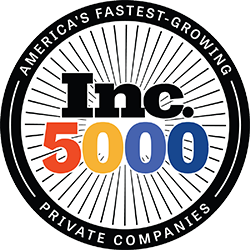Contributor: David Lynn, CSP
One of the biggest challenges in the safety world is that company leaders sometimes treat safety as an “activity” separate from the actual work task. Leaders can fail to realize that safety is a measure of work efficiency that requires problem solving filters that are integrated into every individual’s choice. To achieve safety success, filter decisions through an organizational safety framework, frontline leadership engagement, and individual ownership of critical decisions. Each one of these filters have the potential to steer an employee’s judgement in a direction that prevents mistakes that lead to incidents.
What does that mean from a practical perspective?
Organizational Safety Framework;
Structure promotes consistency and it builds confidence in workers because they know the company’s expectations. Find a way to instill fundamental safety principles into the organization’s safety framework, but keep in mind that principles are half the story. Leaders must know how they will tactically put these principles into practice. Just like organized sports, teams must have a game plan and strategy that puts principle into practice. The strategic safety framework should include several elements: management commitment and visibility, employee involvement, work site analysis, training and communication, and prevention and controls.
Frontline Leadership Engagement;
Ask this simple question about leadership style. Are frontline leaders more likely to manage safety from behind a computer or will they ask employees questions face to face in the work environment? What is more effective? The most influential and cost-effective safety tool a leader has is a conversation with an employee. This is important because employees are not the problem.
They are the problem solvers and frontline leaders should engage employees to solve problems. When frontline leaders ask employees questions about their work, they learn about the challenges that employees face. Frontline leaders gain real-time understanding. They share expectations and break down obstacles. Frontline leaders help drive improvement with conversations.
Individual Ownership;
Individual ownership starts when employees see their personal need for safety, and they show a genuine concern for coworkers. Employees can begin to see a need for safety if they ask simple questions like “What if?” Acknowledge that mistakes and injuries can happen to any employee. This realization will help guide and influence employee decisions.
The “What If?” mindset embraces the personal responsibility to avoid mistakes that lead to injuries. There is a tremendous benefit to cultivating a positive culture where every employee considers the risk of each task and promotes the expectation to approach others that may be at risk. Employees have to reinforce safety principles that leaders promote with their personal action. What if, employees look for hazards and take ownership of correcting them?
THE BOTTOM LINE IS THAT WORK IS DYNAMIC!
Employees make thousands of decisions every day that have the potential to impact safety. Company leaders and employees cannot predict every single variation of choice, but they can control how they make decisions with filters that are integrated into the work they perform. That is why leaders need to ensure they have a robust organizational safety framework, frontline leadership engagement, and individual ownership of employee actions. These are the keys to success with safety.



